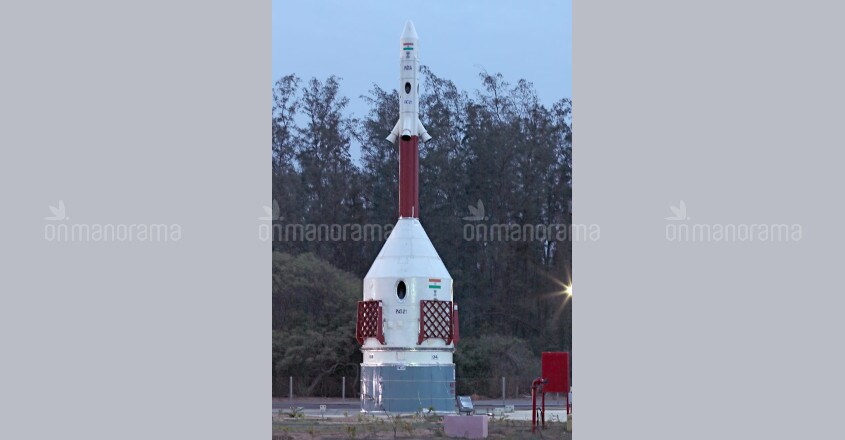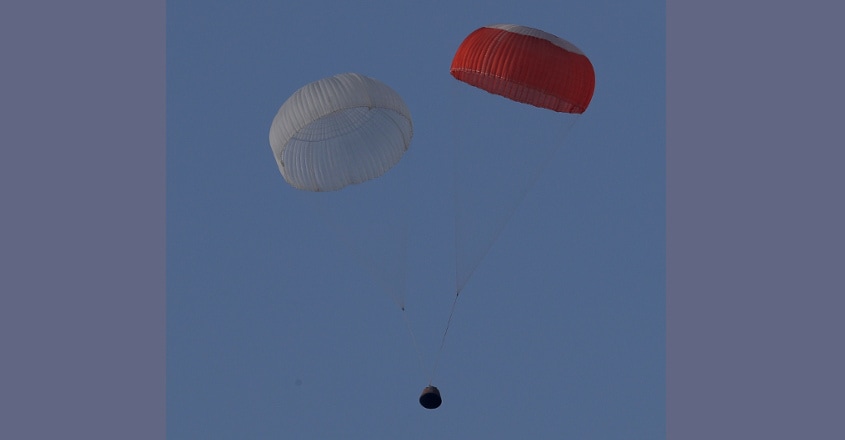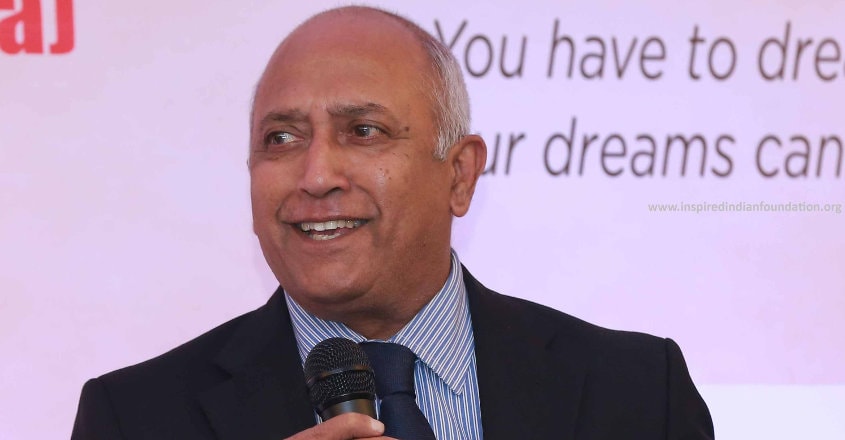ISRO conducts key crew escape test for human space mission

Mail This Article
Bengaluru: The Indian Space Research Organisation (ISRO) on Thursday successfully conducted a pad abort test (PAT) on its experimental crew escape system (CES).
The successful test on the technology demonstrator brought ISRO a step closer to its ambitious and yet-to-be-named future manned mission – the Human Spaceflight Programme (HSP).
ISRO said PAT was the first in a series of tests to qualify the CES, which is an ‘emergency measure to pull the crew module along with the astronauts to a safe distance from the launch vehicle, in the event of a launch anomaly.’
“Today’s test was to see how the systems performed when the abortion was done on the launch pad. This is part of testing various abort strategies in the pipeline and the future tests will be done from a test vehicle,” an official said.

Picking up the first slot during the two-hour launch window, the CES along with the simulated crew module (12.6 tonnes) lifted off at 7 am (IST) from the Satish Dhawan Space Centre (SDSC) in Sriharikota on Thursday.
The test lasted for 4 minutes and 19 seconds during which the CES and the module soared skyward, before arcing out over the Bay of Bengal with the help of parachutes and landing 2.9 km from the launch pad.
The crew module has been recovered from the sea and brought back to the base with the help of three boats, marked for the purpose. “It cannot be used again and we pray in real missions we don’t experience these abortive tests,” an official said.

Five critical technologies validated: Dr Sivan
Speaking to Onmanorama from Sriharikota, ISRO chairman Dr K Sivan termed Thursday’s mission as ‘fantastic.’ He said in addition to the PAT test, ISRO also validated five critical technologies for various future space missions.
“Today’s mission involved testing of many critical systems and we are happy with the results. I can say the mission went by the textbook plan and the results are encouraging. I am delighted that we also tested five critical technologies successfully by embedding them on to this mission,” Dr Sivan said.
He said Thursday’s mission saw very complex and fast-burning solid motors, seven of them in all, taking the crew module to its intended altitude of 2.7 km.
“We have successfully demonstrated how the module was taken to a safe distance without exceeding the safe g-levels. The uniqueness of the complex nozzle geometry ensured the module to turn at the critical juncture. We now have the specialized motor required for the CES,” Dr Sivan said.
Close to 300 sensors recorded various mission performance parameters during today’s flight and various teams will now analyse them ahead of the next set of tests.

Among the five critical technologies that got validated during today’s missions were:
1) Wireless communication which ensured reduced mass of the system. It means data transfer done without cables.
2) Digital telemetry was used for the first time (from analog) that enabled less usage of power.
3) Ka-band altimeter that enables highly accurate landing information when the module is descending. This is key to Chandrayaan-2 mission.
4) A new tech where the data was linked to GSAT-6 and was relayed back.
5) NAVIC was used to predict the accurate position in a highly dynamic environment and at very high speeds. NAVIC prediction was bang on despite high rate of change and velocity.
No dearth of resources: Rakesh Sharma
India’s first and only man to have gone to space Wg Cdr Rakesh Sharma (Retd), told Onmanorama from Coonoor that the capabilities of Indians were never in doubt, and they only had to be enabled.
“I am happy there is some movement in this direction (manned space flight) now. When we look at all the facts, we know the GSLV-Mk-III has reached success. It’s heartening to know that the groundwork is proceeding parallel. When the resources are made available, there no dearth of resources, more so with ISRO,” Wg Cdr Sharma, a recipient of Ashoka Chakra, said.
He said India had waited enough for its manned mission to take wings and hoped today’s successful demonstrator flight would set the tone.
“It should happen sometime soon. Hope the policy decision will be in as well. We need a vision document. Vikram Sarabhai had a vision for India’s space programmes and ISRO is reaping the benefits now. Similarly, a vision and will is needed to take the manned space programme to its intended destination,” says the famous astronaut, who was the 128th man to have gone to space on April 3, 1984.
He had logged seven days, 21 hours and 40 minutes in space after the Russian spacecraft Soyuz T-11 docked at the Salyut 7 Station. It is from here he sent out the famous Saare Jahan Se Achcha message to the Earth, while on a conversation with then Prime Minister Indira Gandhi. He was a Squadron Leader with the Indian Air Force then.

Interestingly on the occasion of the 2nd Guru Kalam Memorial lecture in Bengaluru in October last year, Wg Cdr Sharma shared details with this writer as to how a Russian cosmonaut had carried a guitar onboard the Souyz, while he had a tape recorder and a cassette loaded with his favourite songs, including Hindustani classical, Sufi music among others.
First re-entry test done in 2014
On December 18, 2014, ISRO had successfully conducted the first demonstration of the atmospheric re-entry flight of the 3775-kg Crew Module Atmospheric Re-entry Experiment (CARE) that was developed for the HSP. During this mission, the scientists had tested atmospheric re-entry technologies and had validated the parachute systems. During the CARE mission, the crew module got separated from the launch vehicle at an altitude of 126 km and then entered the earth’s atmosphere.
Insiders say there are six more tests planned in future to validate end-to-end abortion and escape strategy of the crew module.
By validating five new technologies piggy-riding on PAT mission, ISRO is probably living up to its brand image of a cost-effective space agency. ‘We have done these tests at 1/10 of the costs elsewhere,” says and official.
And, for the record, Thursday’s tests might have triggered the interest levels of many experimental test pilots of Indian Air Force and Indian Navy, who are sure to join the race to become India’s future astronauts.
(The writer is an independent aerospace, defence journalist, who blogs at Tarmak007 and tweets @writetake.)

